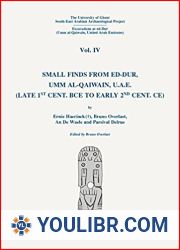
BOOKS - Beyond the Wall: East Germany, 1949-1990

Beyond the Wall: East Germany, 1949-1990
Author: Katja Hoyer
Year: April 6, 2023
Format: PDF
File size: PDF 12 MB

Year: April 6, 2023
Format: PDF
File size: PDF 12 MB

Beyond the Wall: East Germany, 1949-1990 The book "Beyond the Wall: East Germany, 1949-1990" by Katja Hoyer offers a comprehensive and nuanced understanding of the history of East Germany, a country that disappeared when the iron curtain fell in 1990. The book provides a kaleidoscopic vision of this vanished country, from its inception in the aftermath of World War II to its eventual collapse under the weight of socialism and ideological rigidity. Through a vast array of previously unseen interviews, letters, and records, Hoyer paints a vivid picture of life in East Germany, challenging the Cold War caricature often portrayed in the West. The book begins with the bitter experience of German Marxists exiled by Hitler, tracing the arc of the state they would go on to create under the watchful eye of Stalin and later in an increasingly distinctive German fashion. From the building of the Berlin Wall in 1961 to the relative prosperity of the 1970s and the creaking foundations of socialism in the mid-1980s, Hoyer reveals the complexities of life behind the Iron Curtain. She argues that despite oppression and frequent hardship, East Germany was home to a rich political, social, and cultural landscape, one that was far more dynamic than the simplistic portrayal often presented in the West. Hoyer's narrative is powerfully told, weaving together the personal stories of individuals who lived through these tumultuous decades.
Beyond the Wall: East Germany, 1949-1990 Книга «Beyond the Wall: East Germany, 1949-1990» Кати Хойер предлагает всестороннее и тонкое понимание истории Восточной Германии, страны, исчезнувшей при падении железного занавеса в 1990 году. Книга представляет калейдоскопическое видение этой исчезнувшей страны, от её зарождения после Второй мировой войны до её возможного краха под тяжестью социализма и идеологической жёсткости. С помощью огромного количества ранее невиданных интервью, писем и записей Хойер рисует яркую картину жизни в Восточной Германии, бросая вызов карикатуре холодной войны, часто изображаемой на Западе. Книга начинается с горького опыта немецких марксистов, изгнанных Гитлером, прослеживая дугу государства, которое они будут создавать под пристальным вниманием Сталина, а затем все более и более характерным немецким образом. От здания Берлинской стены в 1961 году до относительного процветания 1970-х и скрипящих основ социализма в середине 1980-х Хойер раскрывает сложности жизни за железным занавесом. Она утверждает, что, несмотря на угнетение и частые трудности, Восточная Германия была домом для богатого политического, социального и культурного ландшафта, который был гораздо более динамичным, чем упрощенное изображение, часто представленное на Западе. Повествование Хойера мощно рассказано, сплетая воедино личные истории людей, переживших эти бурные десятилетия.
Beyond the Wall : East Germany, 1949-1990 livre Beyond the Wall : East Germany, 1949-1990 de Kati Hoyer offre une compréhension complète et subtile de l'histoire de l'Allemagne de l'Est, un pays qui a disparu à la chute du rideau de fer en 1990. livre présente une vision kaléidoscopique de ce pays disparu, depuis sa naissance après la Seconde Guerre mondiale jusqu'à son effondrement possible sous le poids du socialisme et de la dureté idéologique. Avec un grand nombre d'interviews, de lettres et d'enregistrements inédits, Hoyer brosse un tableau frappant de la vie en Allemagne de l'Est, défiant la caricature de la guerre froide, souvent représentée en Occident. livre commence par l'expérience amère des marxistes allemands expulsés par Hitler, en traçant l'arc de l'État qu'ils créeront sous l'attention de Staline, puis de plus en plus caractéristique de l'image allemande. De la construction du mur de Berlin en 1961 à la prospérité relative des années 1970 et aux fondations grinçantes du socialisme au milieu des années 1980, Hoyer révèle les difficultés de la vie derrière le rideau de fer. Elle affirme que malgré l'oppression et les difficultés fréquentes, l'Allemagne de l'Est a été le foyer d'un riche paysage politique, social et culturel qui était beaucoup plus dynamique que l'image simpliste souvent représentée en Occident. La narration de Heuer est racontée avec force, en tissant des histoires personnelles de personnes qui ont survécu à ces décennies tumultueuses.
Beyond the Wall: East Germany, 1949-1990 libro «Beyond the Wall: East Germany, 1949-1990» de Kati Hoyer ofrece una comprensión completa y sutil de la historia de Alemania del Este, un país desaparecido por la caída del telón de acero en 1990. libro presenta una visión caleidoscópica de este desaparecido país, desde su nacimiento tras la Segunda Guerra Mundial hasta su posible colapso bajo el peso del socialismo y la dureza ideológica. Con la ayuda de un gran número de entrevistas, cartas y grabaciones nunca antes vistas, Hoyer dibuja una vívida imagen de la vida en Alemania Oriental, desafiando la caricatura de la Guerra Fría, a menudo retratada en Occidente. libro comienza con la amarga experiencia de los marxistas alemanes expulsados por Hitler, trazando el arco del Estado que crearían bajo la atenta mirada de Stalin y luego de una manera alemana cada vez más característica. Desde el edificio del Muro de Berlín en 1961 hasta la relativa prosperidad de los 70 y los cimientos crujientes del socialismo a mediados de los 80, Hoyer revela las complejidades de la vida detrás del telón de acero. Afirma que, a pesar de la opresión y de las dificultades frecuentes, Alemania Oriental era el hogar de un rico paisaje político, social y cultural que era mucho más dinámico que la imagen simplista que a menudo se presentaba en Occidente. La narración de Hoyer se cuenta poderosamente, tejiendo historias personales de personas que sobrevivieron a estas décadas turbulentas.
Beyond the Wall: East Germany, 1949-1990 Il libro «Beyond the Wall: East Germany, 1949-1990» di Katia Hoyer offre un'ampia e sottile comprensione della storia della Germania orientale, paese scomparso dalla caduta della cortina di ferro nel 1990. Il libro rappresenta la visione caleidoscopica di questo paese scomparso, dalla sua nascita dopo la Seconda Guerra Mondiale al suo possibile crollo sotto il peso del socialismo e della durezza ideologica. Con un vasto numero di interviste, lettere e registrazioni mai viste prima, Hoyer dipinge un quadro vivace della vita nella Germania orientale, sfidando la vignetta della guerra fredda, spesso rappresentata in Occidente. Il libro inizia con l'amara esperienza dei marxisti tedeschi, cacciati da Hitler, tracciando l'arco dello stato che avrebbero creato sotto l'attenzione di Stalin e poi sempre più caratteristico tedesco. Dall'edificio del Muro di Berlino nel 1961 alla relativa prosperità degli annì 70 e ai fondamenti scricchiolanti del socialismo nella metà degli annì 80, Hoyer rivela le difficoltà della vita dietro la cortina di ferro. Sostiene che, nonostante l'oppressione e le frequenti difficoltà, la Germania orientale era la casa di un ricco panorama politico, sociale e culturale che era molto più dinamico di un'immagine semplificata, spesso rappresentata in Occidente. La narrazione di Hoyer è stata raccontata in modo potente, mettendo insieme le storie personali delle persone che hanno vissuto questi decenni turbolenti.
Jenseits der Mauer: Ostdeutschland, 1949-1990 Das Buch „Jenseits der Mauer: Ostdeutschland, 1949-1990“ von Katja Hoyer bietet einen umfassenden und subtilen Einblick in die Geschichte Ostdeutschlands, eines Landes, das 1990 beim Fall des Eisernen Vorhangs verschwand. Das Buch präsentiert eine kaleidoskopische Vision dieses verschwundenen Landes, von seinen Anfängen nach dem Zweiten Weltkrieg bis zu seinem möglichen Zusammenbruch unter dem Gewicht des Sozialismus und der ideologischen Starrheit. Mit einer Vielzahl von bisher nie gesehenen Interviews, Briefen und Aufnahmen zeichnet Hoyer ein lebendiges Bild des bens in Ostdeutschland und fordert die im Westen oft dargestellte Karikatur des Kalten Krieges heraus. Das Buch beginnt mit den bitteren Erfahrungen der deutschen Marxisten, die von Hitler vertrieben wurden, und zeichnet den Bogen des Staates nach, den sie unter Stalins Kontrolle und dann in einer immer charakteristischeren deutschen Weise schaffen werden. Vom Mauerbau 1961 über den relativen Wohlstand der 1970er Jahre bis hin zu den knarrenden Grundlagen des Sozialismus Mitte der 1980er Jahre offenbart Hoyer die Komplexität des bens hinter dem Eisernen Vorhang. e argumentiert, dass Ostdeutschland trotz Unterdrückung und häufiger Schwierigkeiten die Heimat einer reichen politischen, sozialen und kulturellen Landschaft war, die viel dynamischer war als das vereinfachte Bild, das oft im Westen präsentiert wurde. Hoyers Erzählung ist kraftvoll erzählt und verwebt persönliche Geschichten von Menschen, die diese turbulenten Jahrzehnte überlebt haben.
''
Duvarın Ötesi: Doğu Almanya, 1949-1990 Kati Hoyer'in Duvarın Ötesi: Doğu Almanya, 1949-1990, 1990'da Demir Perde düştüğünde ortadan kaybolan bir ülke olan Doğu Almanya'nın tarihi hakkında kapsamlı ve incelikli bir anlayış sunuyor. Kitap, II. Dünya Savaşı'ndan sonraki başlangıcından sosyalizmin ağırlığı ve ideolojik katılık altında olası çöküşüne kadar bu kayıp ülkenin kaleydoskopik bir vizyonunu sunuyor. Daha önce görülmemiş röportajlar, mektuplar ve kayıtlardan oluşan geniş bir hazineyle Hoyer, Batı'da sıklıkla tasvir edilen Soğuk Savaş karikatürüne meydan okuyarak Doğu Almanya'daki yaşamın canlı bir resmini çiziyor. Kitap, Hitler tarafından kovulan Alman Marksistlerinin acı deneyimleriyle başlıyor, Stalin'in denetimi altında yaratacakları devlet eğrisini ve daha sonra giderek daha farklı bir Alman yolunu izliyor. 1961'de Berlin Duvarı'nın inşasından 1970'lerin göreceli refahına, 1980'lerin ortalarında sosyalizmin gıcırdayan temellerine kadar Hoyer, Demir Perde'nin arkasındaki yaşamın karmaşıklığını ortaya koyuyor. Baskıya ve sık sık yaşanan zorluklara rağmen, Doğu Almanya'nın Batı'da sıklıkla sunulan basit tasvirden çok daha dinamik olan zengin bir siyasi, sosyal ve kültürel manzaraya ev sahipliği yaptığını savunuyor. Hoyer'in anlatısı güçlü bir şekilde anlatılıyor ve bu çalkantılı yıllarda yaşayan insanların kişisel hikayelerini bir araya getiriyor.
ما وراء الجدار: ألمانيا الشرقية، 1949-1990 كاتي هوير ما وراء الجدار: ألمانيا الشرقية، 1949-1990 يقدم فهمًا شاملاً ودقيقًا لتاريخ ألمانيا الشرقية، البلد الذي اختفى عندما سقط الستار الحديدي في عام 1990. يقدم الكتاب رؤية تنظير لهذا البلد المختفي، منذ بدايته بعد الحرب العالمية الثانية إلى انهياره المحتمل تحت وطأة الاشتراكية والجمود الأيديولوجي. من خلال مجموعة كبيرة من المقابلات والرسائل والتسجيلات غير المرئية سابقًا، يرسم هوير صورة حية للحياة في ألمانيا الشرقية، متحديًا الرسوم الكاريكاتورية للحرب الباردة التي غالبًا ما يتم تصويرها في الغرب. يبدأ الكتاب بالتجارب المريرة للماركسيين الألمان الذين طردهم هتلر، وتتبع قوس الدولة التي سيخلقونها تحت رقابة ستالين، ثم بطريقة ألمانية مميزة بشكل متزايد. من بناء جدار برلين في عام 1961 إلى الازدهار النسبي في السبعينيات إلى الأسس الصرير للاشتراكية في منتصف الثمانينيات، يكشف هوير عن تعقيدات الحياة خلف الستار الحديدي. وتجادل بأنه على الرغم من الاضطهاد والمصاعب المتكررة، كانت ألمانيا الشرقية موطنًا لمشهد سياسي واجتماعي وثقافي غني كان أكثر ديناميكية بكثير من التصوير المبسط الذي غالبًا ما يتم تقديمه في الغرب. يتم سرد رواية هوير بقوة، حيث تجمع القصص الشخصية للأشخاص الذين عاشوا خلال هذه العقود المضطربة.








 49
49  2 TON
2 TON



















